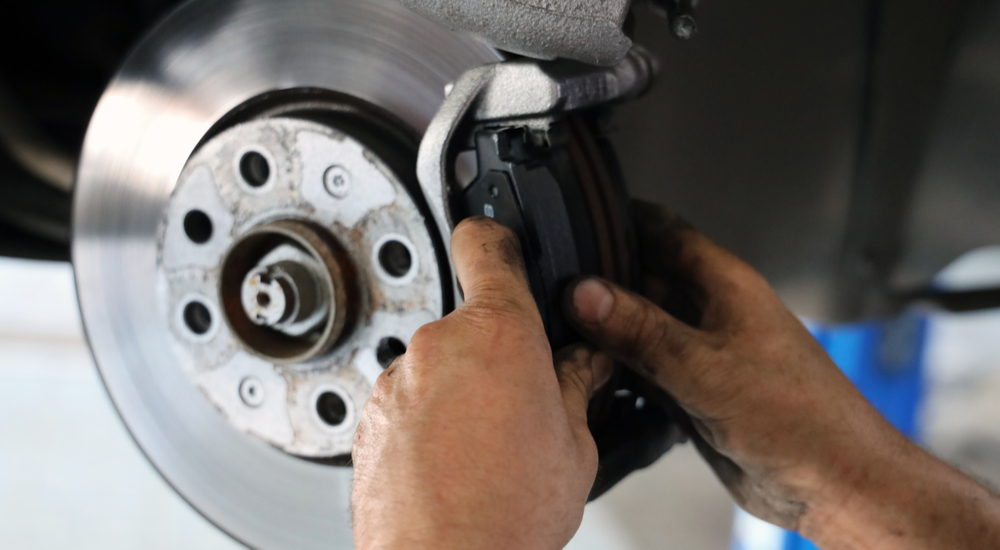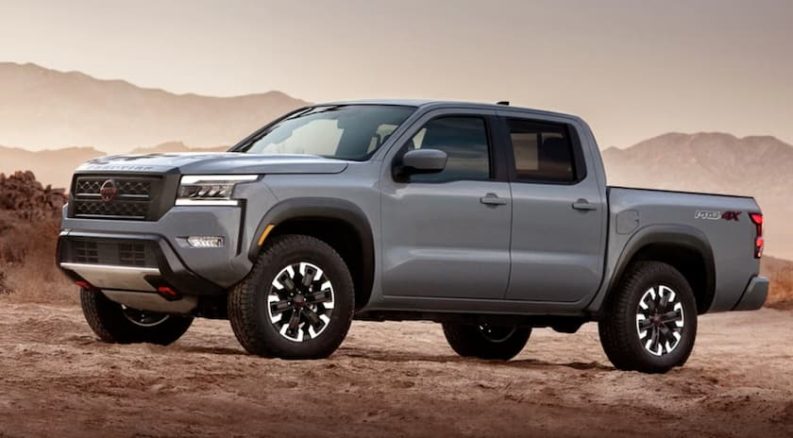If you’re a person who enjoys DIY car maintenance, the emergence of complex electronic vehicle systems may feel like a deterrent, but even the newest cars still contain basic components that are easy to take care of yourself. Performing a Nissan oil change isn’t for the typical owner, but if you have the right tools and following general instructions comes easy, it’s a straightforward process.
Which routine maintenance items can you tackle at home without converting your garage into an authorized Nissan service center? Surprisingly, the answer is a lot of them. Everything from checking and replenishing fluids to oil and fuse changes is easy, especially when you have your Nissan owner’s manual handy.
Truck owners tend to favor DIY maintenance and light repairs, so we’ll focus on the 2022 Nissan Frontier. It has a pretty standard 3.8-liter 24-valve direct-injection V6 that’s easy to reach, including convenient access to fluid reservoirs and the oil filter. It also has plenty of ground clearance – around 10 inches – for working underneath without needing to jack the truck up. Don’t let the sophisticated circuitry fool you: it’s still a vehicle and needs all the same components as the trucks of old, like oil, filters, fluids, and spark plugs.

DIY Fluid Maintenance
The Nissan Frontier is just like any other combustion engine vehicle in that it relies on a series of fluids to keep it running well. Avoiding knocks and pings is as easy as keeping those fluids clean and full. On the Frontier, they include: automatic transmission fluid, engine coolant, power steering fluid, brake fluid, and windshield washer fluid.
Each fluid reservoir is conveniently located in a spot that doesn’t require removing other equipment or uncomfortable body contortions to reach. The transmission fluid is the only exception. However, Nissan recommends leaving checking and changing transmission fluid to an authorized technician. As with any new vehicle, it’s important to follow the owner’s manual or risk voiding the warranty.
The power steering fluid is another story (yes, the new 2022 Frontier still uses hydraulic power steering). Owners can easily check it when the engine is either cold or hot, but we recommend doing both. Let the truck sit for at least three hours before performing the “cold” check. The reservoir is located at the center of the left side of the engine compartment. Just unscrew the top and check to make sure the level falls between the cold min and cold max notches. Repeat the process when the engine is warm, looking for the hot min/max notches.
To check coolant, make sure the engine is cold and look at both the reservoir and the radiator. You shouldn’t need to add more since Nissan’s formula is rated to last for over seven years or 100,000 miles, but if for some reason the levels fall below the minimum, be sure to replace it with the same Nissan branded coolant. We recommend a trip to the service center before adding fluid just in case there’s a bigger problem.
Checking brake fluid levels includes the same basic instructions. The reservoir is located at the right rear end of the engine compartment. Check the min/max levels and add Nissan-approved brake fluid as needed. Note that if your vehicle requires frequent topping off, it’s a sign of a bigger problem. Get your truck in for an inspection as soon as you can.
Checking and Changing Your Oil and Filter
Oil changes are a little more complex on the 2022 Frontier, but nothing an experienced DIYer can’t handle with a few tools and a free afternoon. First off, you’ll want to check the engine oil level and quality. It’s important to run the engine for a few minutes, then let it cool for another so the oil can even out its viscosity.
Oil changes should happen under the same circumstances (a warm engine). Jack up the truck and remove the skid plate if required. Locate the oil filter and remove the cover, then place a drip pan underneath. Remove the oil filler cap. The drain plug comes off with a basic wrench – turn it counterclockwise to drain the oil and take caution because the oil will be hot.
Next, remove the old oil filter using a twisting motion with your hand. Clean the mounting surface thoroughly and remove gasket material or gunk that might interfere with a good seal. Lubricate the new filter’s seal with engine oil and screw it in clockwise until you feel resistance. Turn an additional 2/3 until you reach 11-15 lb-ft of torque. Finally, refill the oil to factory-recommended levels (5-1/4 quarts of SAE 0W-20 oil).
Start the engine and observe the drain plug and oil filter areas. Check for leaks around those areas and then shut off the engine. Wait around a few minutes, then check the oil level using the dipstick. You can top off the oil as necessary to reach the max line. Lower the vehicle off the jacks, and remember to make a note of when your next oil change will be needed.

Services You Shouldn’t DIY
Today’s factory warranties are so comprehensive that it’s unnecessary to do your own maintenance aside from oil changes and perhaps brakes and tire rotations. While doing these yourself will undoubtedly save you money, it does cost time, so a certain amount of enjoyment needs to be part of the equation.
However handy you might be, we recommend not fooling with your vehicle’s electrical systems or circuitry. These systems are interdependent and highly complex. As we tinker with a wire here or a plug there, we can inadvertently trigger a domino effect of failures or – even worse – further damage a component.
Nissan authorized service centers are equipped with the diagnostic equipment necessary to handle these types of complex issues. It’s best to leave it to the experts because no one wants to face living with a voided warranty, not to mention the effect it has on your vehicle’s resale value. Tinkerers always love to figure out how things work, but in this case, it’s not recommended.
Our other big recommendation is to avoid questionable internet “gurus” with quick-fix tips or other vehicle hacks. These so-called experts sound like they know what they’re doing, but in many cases, their recommendations run counter to factory guidelines. It may be fascinating to learn that you can turn off service reminders by pushing the odometer reset button while holding down the horn and standing on your head, but is it wise? Probably not.
Smart DIY Maintenance Wins the Day
Whatever Nissan you park in your driveway, know that it still needs wiper blades, brake pads, and clean oil. You can manage these basic maintenance items at home, provided you have the correct tools and the space and time necessary to do it right. It’s a great feeling to handle these projects yourself and the perfect way to get to know your vehicle better.
It’s also important to use genuine factory replacement parts and fluids to ensure you’re not introducing a sub-par quality aftermarket part into your vehicle’s architecture. The auto parts store is full of facsimiles at a fraction of the cost, but the old adage applies: you get what you pay for. Instead, err on the side of caution and visit your local Nissan dealer’s parts department for the correct parts.
Just remember, your vehicle likely costs five figures – why would you want to jeopardize the warranty or worse, permanently damage a critical component? Exercise restraint and, by all means, stay within your skill range when doing any work on your vehicle. When in doubt, count on an authorized Nissan service center to do the work for you.

